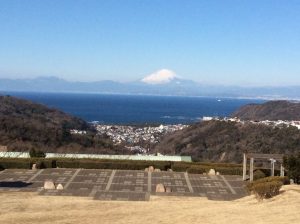
I was in Japan for 9 days, accompanying my wife who had a workshop to attend. I should say that we both enjoyed every minute of this trip. Japan is a great place to visit on a lot of counts. It is clean, orderly and people are courteous. Food for vegetarians can be challenging, but we managed really well, with the hotels and conference center going out of their way to accommodate our needs (I am not a strict vegetarian, but I do have shellfish allergy). We also found several vegetarian restaurants in Tokyo and Kyoto.
One of the most disappointing aspect of our trip was the poor WiFi. We took the bullet train a few times and there is no WiFi. Apparently there is a paid version available, which is expensive, but we could not find a lot of details. On the other hand, it turned out to be great in some sense because we enjoyed the ride and viewing the beautiful Mt Fuji a few times from the train. But, even in hotels, the WiFi was slow. They protect the WiFi big time. Each room had its own password regardless of where we stayed. In one case, it was cleverly done. You turned on your TV and a menu item provided the details for getting on a WiFi. I had to use my phone’s cell data a lot in the end.